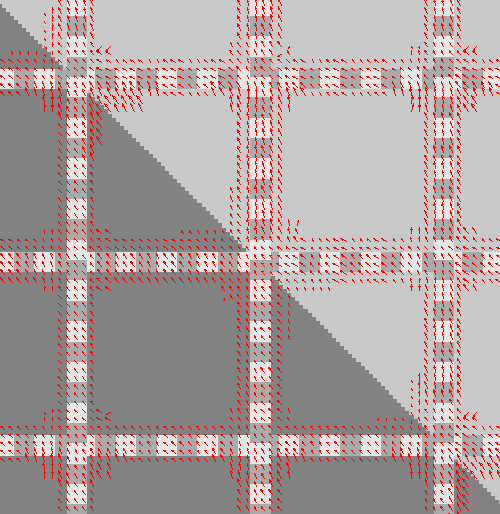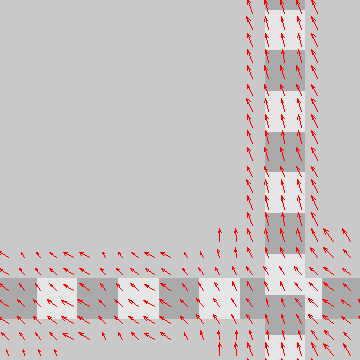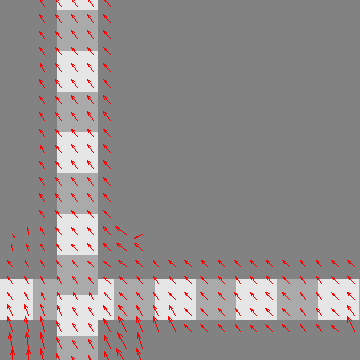
Errors in Movement
- How image movement is estimated
- Ouchi Illusion
- Wheels Illusion
- Rotating spiral
- Moving sinusoids
- Boogie Woogie illusion
Boogie Woogie illusion

Trickle demonstration: Gaze at the two black fixation marks in turn.
In this pattern by Cavanagh and Anstis
[19] a grid of horizontal
and vertical lines, each composed of light and dark squares is moved rigidly along the diagonal.
In the upper right part where the luminance of the background is midway between the luminaces
of the squares, the squares appear to race along the lines.
In contrast, in the lower left where the luminance of the background is darker than the drifting lines,
the motion is seen veridically.
In the upper right the contrast between the light and dark squares of the grid is stronger than the contrast between the squares and the background. Thus, there is more signal (that is a larger signal to noise ratio) between the different squares than between the squares and the background. The estimated flow is closer in direction to the stonger signal. This explains the illusion. The average motion is seen diagonally and the error in the flow estimates is interpreted as additional motion along the grid lines. The figures below illustrate the flow estimation.

Flow obtained using least squares estimation within small regions

Zoom in on upper right

Zoom in on lower left